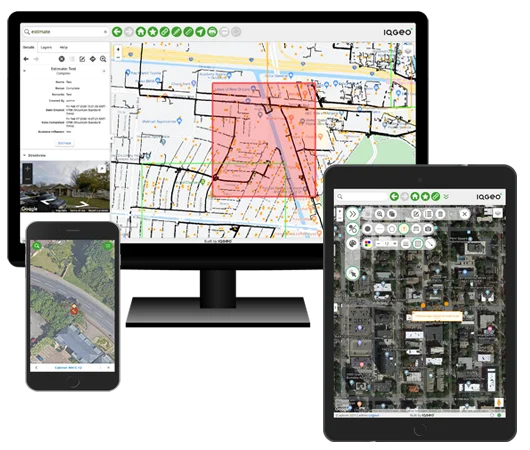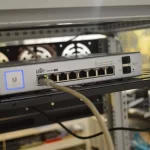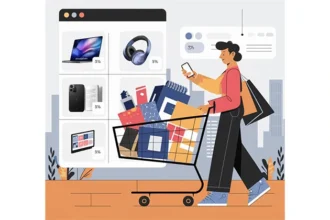COVID-19 has changed the world we live in, and the role of telecoms has arguably never been so important. With self-isolation and remote working the new normal for many of us across the world, the need to provide secure and reliable home networks is ever more critical. Even before this unprecedented situation in which we find ourselves, telecom operators were undergoing a period of profound change. Highly competitive markets and new technology such as FTTx and 5G are all creating new opportunities for revenue, but at the same time, there are major challenges in terms of time to market and managing legacy technology.
While the technology and day to day challenges have evolved significantly over the last 20 years for telecom operators, operational systems for designing, building, and maintaining these systems in the market have not kept pace. Many operators find themselves planning these new networks on the same systems as they used decades ago.
At IQGeo we see things differently. The need for the telecoms industry to reimage their operational processes is being driven by five key trends that are fundamentally changing the way enterprises use technology within their organizations to design, build, and manage networks.
- Next-generation Networks Will Need a Reality-Centric Geospatial Approach
Telecoms networks are increasingly complex, with thousands of constantly changing assets across miles of infrastructure. However, the cartography-centric approach of traditional GIS makes the effective management of these networks almost impossible. Cartography-centric systems were designed for the needs of traditional mapmakers and were built around the concept of very few specialized users designing and printing maps for the rest of the organization.

By contrast, a reality-centric approach is built around the needs of the entire network lifecycle and all the key stakeholders, not just the GIS experts. It understands that a network is an assembly of thousands of live components that must be designed, built, and serviced by large workforces of many different types of users. Reality-centric systems produce a digital twin of the network that can be viewed and worked on by all departments, giving the right information to all users in any location, at any time.
- Network Operators will become Big Data Experts
High-quality data with near real-time currency is essential to the management of rapidly evolving digital networks. Deploying next-generation networks requires enterprises to harness and manage huge amounts of data. This means that telecoms will transform into data-intensive businesses in the same way that Google or Facebook today analyze their data.

In order to become big data experts, telecoms must collect data in the field where their networks are in a constant state of change. The emerging role of Chief Data Officer will be responsible for finding previously hidden correlations between many different activities and sharing these insights to transform the organization, cutting operating costs, and delivering better customer service.
- Systems and Processes will become Human-Centric
As consumers, we expect software experiences that are built around us. Software solutions for the telecoms industry must be based on an understanding of observed human needs and built to respond to these needs. Enterprise software is following this trend and moving away from systems and processes that can only be used by a few, highly skilled individuals. If a system is human-centric it will get used widely across an organization. If a system gets used, it can drive new forms of behavior that will lead to improved processes, increased collaboration, and greater transformation. For enterprise software, human-centric will actually become business-centric.
- Field Operations Must become Fully Digital
For telecoms to have an accurate view of operations and assets, it’s essential that staff and contractors working in the field are fully digital. Today there are still too many paper-based processes and disconnected applications. Field teams must have the latest information at their fingertips and be easily able to update back-office systems to reflect realities on the ground. At the same time, the enterprise must be able to control who sees what and which rights they have with data. With the correct software, the powerful computing capabilities of smartphones and tablets make this both possible and practical.
- Operations will be Increasingly Customer-Centric
If you don’t please your customers, your competitors will. To monitor customer satisfaction operators are increasingly including metrics like Net Promoter Score (NPS) as part of a broader set of corporate KPIs. Within many organizations, NPS will become part of a closed-loop, data-driven analysis that directly connects customer loyalty with other operational KPIs.
Operators will be able to directly measure customer churn against outages and interruptions. They will also be able to measure the impact on NPS of greater productivity on key activities like faster repair times and higher-value services that help to increase revenue per customer. Network operators that focus on NPS will develop a more holistic view of their business and understand the strategic role that the digital transformation of the entire company plays in the ultimate success of the business. Putting the customer first should not be a slogan but a transformational strategy across the whole enterprise.
Summary
At IQGeo we are good at what we do, but we are not prophets. The reason we can make these five predictions is that they are already happening today. Everything described here is happening (and working) somewhere today in our customer base. Our job is to enable all our customers to benefit from the insights we see and our experience of what is working well in our market.
The current situation with COVID-19 does not change these trends, rather amplifies them. In order to keep a reliable and secure service that is demanded by customers in these testing times, it is important to have an accurate, current view of the networks. By looking after your customers in their time of need you will be helping to secure customer satisfaction and loyalty. Seeking out technology partners who understand these challenges and offer solutions will help you to prepare your organization for the challenges of today and for those that lie ahead.









